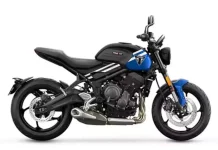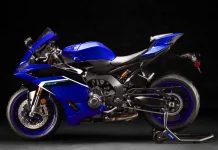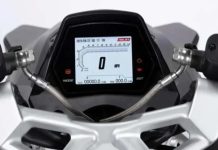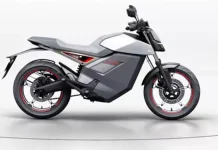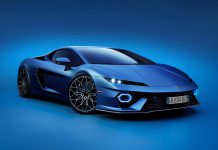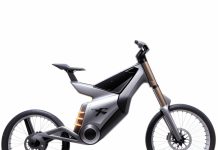Key points:
- Rivian has filed a patent application for a pass-through charging system that would enable vehicle-to-vehicle charging using a single power source.
- The system is still in the patent application stage, so it is not yet clear if it will ever enter production.
- The system could be especially helpful for owners with multiple EVs parked in a garage, or in situations where there are not enough chargers available.
- It has the potential to make charging EVs more convenient and efficient, and it could help to reduce the environmental impact of EVs.
Details
Rivian’s pass-through charging system, as described in its patent application, appears to be an innovative solution for charging electric vehicles (EVs) in congested spaces. By allowing one vehicle to act as a power source for another nearby vehicle, it could potentially alleviate some of the challenges associated with limited charging infrastructure and crowded parking areas.
The concept of using a switching device to direct power from the primary vehicle’s battery system to the secondary vehicle’s battery system is interesting. This approach effectively turns the primary EV into an extension cord, allowing for convenient charging of multiple vehicles without the need for additional charging stations or infrastructure.

Here are some of the potential benefits of Rivian’s pass-through charging system:
- The system helps to reduce the number of chargers that are needed in congested spaces.
- It could make it easier for owners with multiple EVs to charge their vehicles.
- It will also help to reduce the environmental impact of EVs by reducing the amount of energy that is wasted.
The ability to use both AC and DC charging methods, as indicated by the Combined Charging Standard (CCS) connectors in the patent application, suggests flexibility in the charging process. This versatility could be beneficial as EV technology continues to evolve and different charging standards are employed.

Pass through system
Moreover, the pass-through charging system could be particularly useful for owners with multiple EVs parked in congested garages or limited parking spaces. Instead of having to rearrange vehicles to access charging points, this system allows them to charge the nearest EV and use a connector to charge the secondary vehicle without the need for complex manoeuvres.
Patent publication
The publication of a patent application does not guarantee that the described technology will enter production. Patents are often filed to protect intellectual property and innovations, and companies may or may not implement the ideas outlined in the patent.
Rivian’s pass-through charging system presents an intriguing solution to potential future charging problems. However, its real-world implementation, scalability, and compatibility with existing infrastructure remain to be seen.

Pros of Rivian’s pass-through charging system:
- Convenience in congested spaces: The system allows EV owners to charge their vehicles even in crowded parking areas where access to charging stations might be limited. This can make EV ownership more convenient and accessible in urban environments.
- Efficient use of resources: By enabling vehicle-to-vehicle charging, the pass-through system maximizes the utilization of existing EV batteries. It allows one EV to act as a power source for another, reducing the need for additional charging infrastructure.
- Simplified charging for multiple EV owners: Owners with multiple EVs can benefit from the pass-through charging system by easily charging one vehicle at a charging station and using a connector to charge the second vehicle. This eliminates the need to shuffle vehicles around or install multiple charging stations.
- Versatility in charging methods: The use of CCS connectors indicates that both AC and DC charging methods can be employed. This flexibility allows the system to adapt to different charging standards and future developments in EV technology.
Cons of Rivian’s pass-through charging system:
- Practical implementation challenges: While the concept of pass-through charging is innovative, its practical implementation may face technical and logistical challenges. Ensuring efficient power transfer, managing safety considerations, and addressing compatibility issues between different EV models and charging systems could be complex.
- Limited range and battery capacity: Pass-through charging relies on the availability of an EV with sufficient battery capacity to act as a power source. This could be limiting if the primary EV has a low charge or if its battery capacity is inadequate to charge another vehicle fully.
- Dependency on proximity: Pass-through charging requires vehicles to be parked in close proximity for effective power transfer. This means that if a desired charging spot is occupied or the distance between vehicles is too great, the system may not function optimally.
- Uncertainty of production: While the patent application showcases Rivian’s concept, it doesn’t guarantee that the pass-through charging system will enter production or be commercially available. The patent filing may simply serve as a means to protect Rivian’s intellectual property without a definitive plan for implementation.

Conclusion
Rivian’s pass-through charging system is a promising technology that has the potential to make charging EVs more convenient and efficient. The system is still in the patent application stage, so it is not yet clear if it will ever enter production. However, we are excited to see if Rivian decides to bring this system to market. We think it has the potential to be a valuable addition to the EV charging ecosystem.



